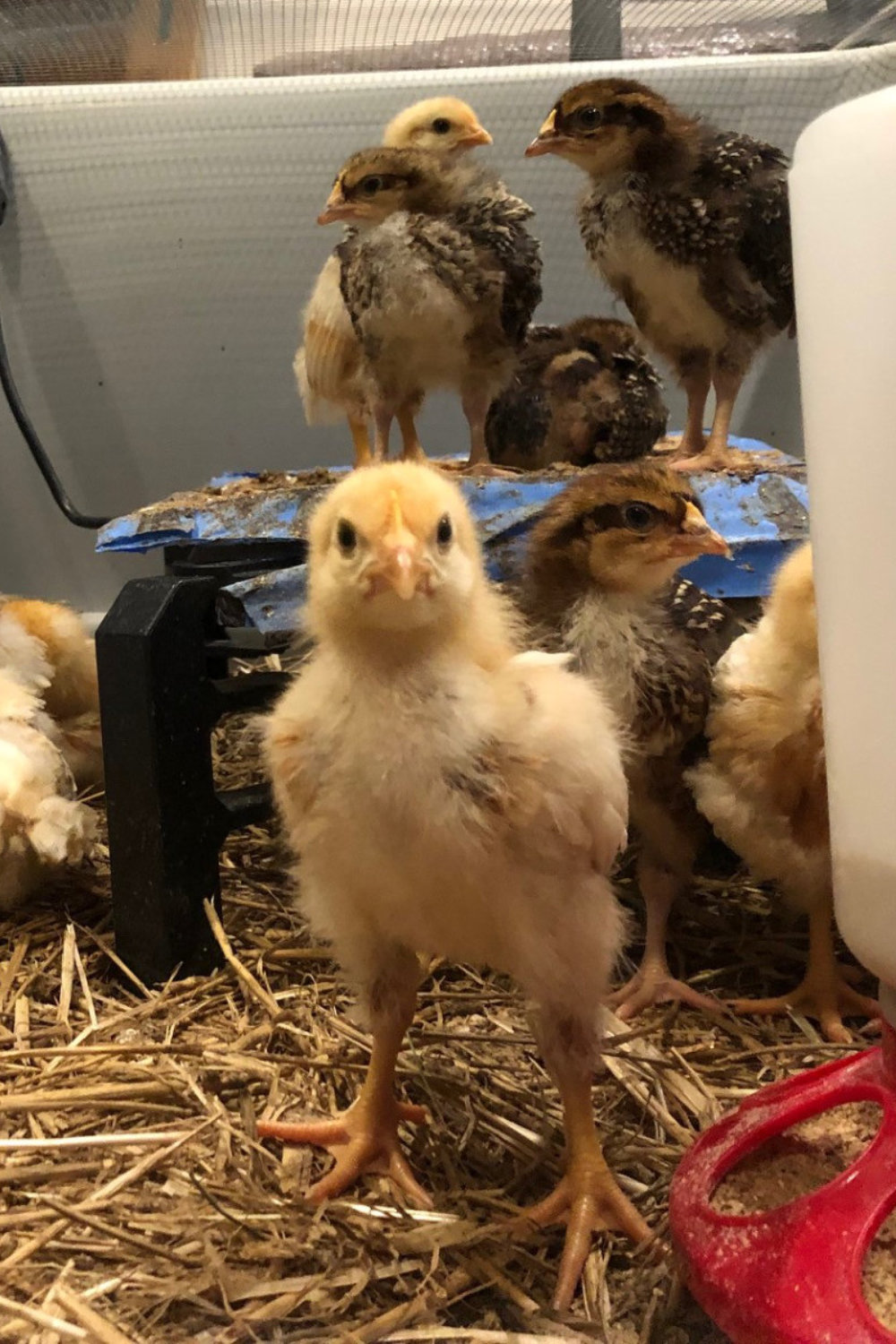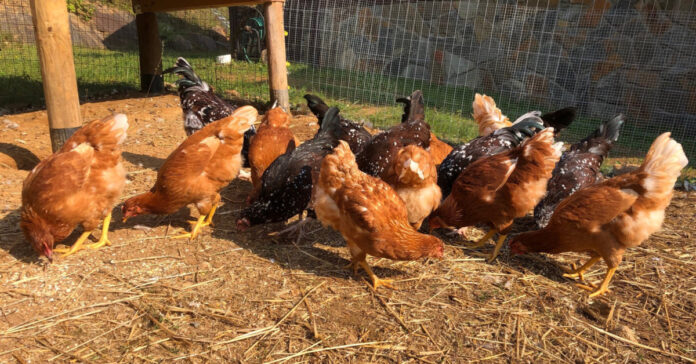I keep chickens because it fits into my prepping/self-sufficiency mindset. With a year of experience under my belt, I would do it again, even if prepping didn’t figure into it. The fresh eggs are just so tasty compared to store-bought eggs, and it takes very little time and effort.
I encourage you to keep chickens if you have a 100 or more square feet available in your backward. There’s some work upfront, but once you get them established, keeping chickens takes just a few minutes per day.
Here’s what you need initially and on an ongoing basis.
Your Initial Investment
A chicken coop. This is where your birds will spend the night. It should keep them secure from predators as small as a mink to as large as a big dog. You can buy or build your coop. Just make sure it is sized for the number of chickens you want. I like a coop that is raised off the ground so the chickens can shelter under it in the rain or if they need shade.
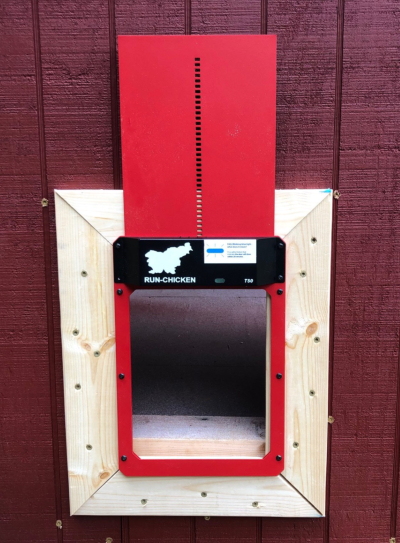
An automated coop door. This is unnecessary, but it will make things much easier on you.
A chicken run. This is a fenced area for the chickens to run around in. You may want a net or wire roof to keep the chickens in and the hawks and eagles out.
A feeder. There are many types of feeders available. You can also buy or build feeders that hold several days’ worth of food. I like a hanging feeder so the chickens don’t walk on it or poop in their feed.
A waterer. These can be as basic as a pet-safe bowl of water to elaborate systems that dispense water to the chickens on an as-needed basis. We are using a 3-gallon rubber tub. It has proven to be unbreakable, but the chickens sometimes wade in it.
Buying Chickens
Once you have the above, you’re ready to have chickens. You can obtain chickens in numerous ways:
- Buy fertilized eggs and use an incubator to hatch your own chicks.
- Order day-old chicks from a hatchery and have them sent to you via the mail
- Buy chicks at your local farm store
- Buy pullets, which are older than chicks but not quite ready to lay
- Find someone nearby or on Craigslist who will sell you some chickens
I recommend buying chicks in person or through the mail from a well-known source. Aim for as many females as possible. After a collapse, that might not be possible, so if you find someone willing to sell you chicks, buy twice as many as you need because around half will be male. You can keep one rooster and eat the rest.
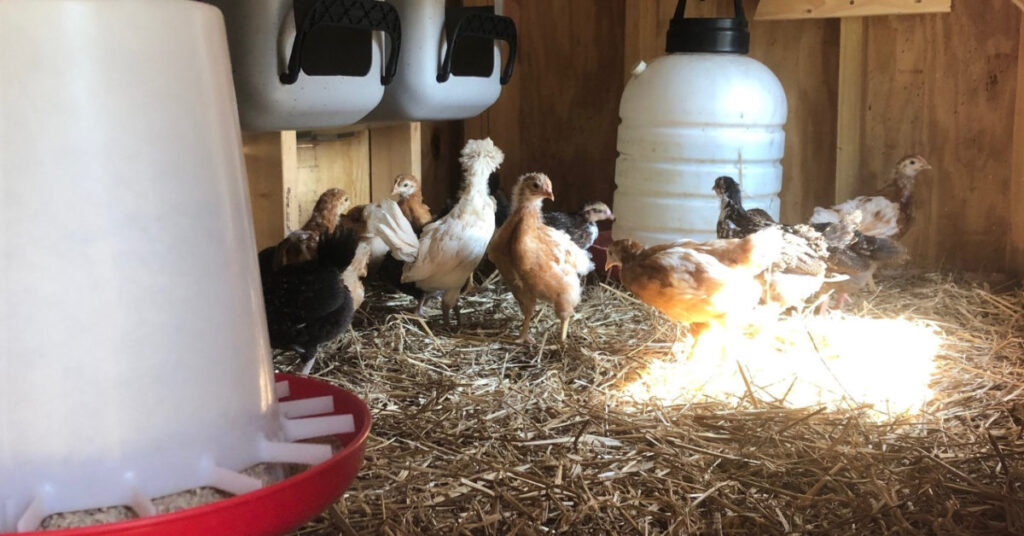
If you prefer to avoid baby chicks, which requires additional equipment and need more care and attention, then buy pullets. At that age, you should be able to tell roosters from hens. I would always try to buy young chickens. If you buy mature chickens from someone, you may unknowingly get old hens past their prime. They will still give you a few eggs, but not as many as they do during the first two years of life.
Recurring Expenses
Once you get your coop, run, equipment and birds, the hard part is over, and so are the bulk of your onetime costs. Now all you have to worry about is your recurring costs for consumables.
Feed. Commercial chicken feed is your biggest recurring expense. My chickens each consume an average of four ounces of feed per day. This number is higher in the winter and lower in warm weather. There are many varieties of feed. I recommend a layer pellet with 16 or 17 percent protein. Mix it 50/50 with a higher protein feed when the hens are molting. The more you let your chickens free range, which is addressed below, the less commercial feed they will need.
Scratch. You don’t need to feed scratch, which is cracked corn with a number of grains mixed in, but I feed it for reasons I will explain below. Scratch is the junk food of the chicken world. It’s the chicken equivalent of eating potato chips or dessert. Scratch should make up less than 10 percent of your bird’s feed.
Grit. Chickens need grit, or small stones, to help grind up their food. They hold the stones in their gizzard and do the work our teeth do. Making sure your chickens have sufficient grit will help them make better use of the feed you give them, saving you money in the long run. Birds that free range may get enough grit from the environment. I feed grit made from granite and grit made from oyster shells, which gives the chickens more calcium to help ensure firm eggshells.
Water. Chickens need fresh water daily, but our water is free.
Bedding: People use everything from sand to woodchips for chicken bedding. I use straw and then compost it. Read up on what people recommend and why. Then pick something that is both recommended and plentiful in your area. I use the deep bedding method, which I consider the lazy man’s approach to chicken bedding. It saves time as you only have to change it every few months.
Cost per Egg
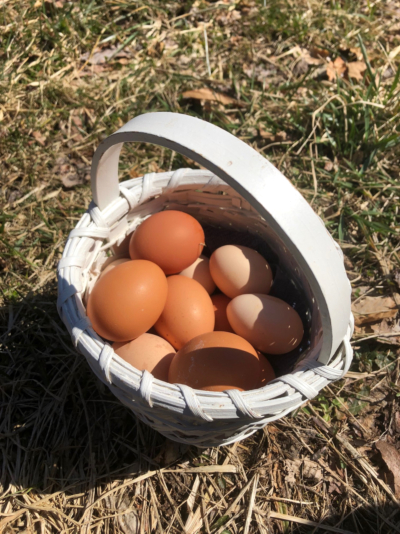
Your cost-per egg will vary based on the size, breed and age of your chickens, plus your weather. However, if you have six hens, I would estimate you can make it through the year on ten 50-pound bags of feed, 50-pounds of grit, and a 50-pound bag of scratch. At today’s prices, that should run you about $250. In return, you’ll get somewhere in the neighborhood of 1,400 to 2,000 eggs. Let be conservative and estimate you harvest only 120 dozen eggs. That means you are paying less than $2.10 per dozen for fresh, free-range chicken eggs. Our cost is $1.80 or less per dozen.
If you say, “We don’t need 10 dozen eggs per month,” then get fewer chickens or sell some of your eggs. If you sell four dozen per month at $5 per dozen, you’ll cover your recurring costs and then the eggs you consume will be cost-free.
Be warned: if you buy organic or other specialized feed, your costs will double.
To Free Range or Not to Free Range
After the SHTF and you can’t buy any more chicken feed, you will have to free range your chickens to ensure they get enough to eat, but you don’t need to right now. Unless you have an enclosed yard, don’t free range your chickens if you want them to take up less than 10 minutes of your time per day.
I compromise and give my chickens occasional supervised free range time. It’s like recess, with me as the recess lady, and our guardian flock dog is in the area to help ensure predators keep their distance. Depending on my schedule, I let the chickens out for anywhere from 10 minutes to an hour on most days. (I don’t free range in the rain or snow, or if I’m busy.) While they free range, I am in the area, watering the garden, inspecting the bees, using the weed whacker, etc. My presence helps deter hawks while ensuring the chickens have time to eat weeds and scratch around for bugs.
In case you are not aware, chickens are omnivores and will eat almost anything. They love to eat meat, whether that’s your dinner leftovers, bugs they catch, a small lizard or snake unlucky enough to be in the area, or even a field mouse. Ideally, only about a third of what they eat while free ranging will be greens. It is funny to watch them chase around butterflies and grasshoppers, but they will catch the careless ones.
Be warned: If you have a pretty flower garden or plantings you are proud of, chickens will tear them up. Don’t free range if you want to preserve your plantings, and keep the chickens out of your garden until after your harvest.
Training Chickens
Although I know a woman who claims she has taught her chickens to count, they are not trainable like a dog. However, they do get used to things and will work on a schedule. This is where the scratch comes in. Here are a few examples of training chickens.
When you get your birds, lock them in the henhouse for three days. This will teach them it is their home. If they are out in the run or free ranging and it starts to get dark, they will return to the coop and settle in for the night. You might consider this training, but it’s just taking advantage of their instincts to roost somewhere secure.
After I water and feed the chickens, I shake a cup of scratch and call “Here chickee chickee!” The hens want the scratch, so they all come running. By tossing them some scratch every time I do this, I reinforce this response. When the chickens are free ranging, and I want them to come back to the coop, I stand in the run, shake the cup of scratch and call them. They come rushing back home. One or two may have a hard time finding their way through the gate, but they are easy to herd back in. Again, repetition and working with their instincts (hunger) is the key.
Should you have a Rooster?
Hens will lay eggs without a rooster, but the eggs are unfertilized. They will not hatch and produce more chickens. If your goal is to produce eggs for consumption, you don’t need a rooster. If your goal is to produce eggs and more chickens after the SHTF, then you should have a rooster to help ensure future generations of chickens.
As a prepper, I insist on having a rooster. I want the capability to increase egg production or to produce birds to butcher, trade, or sell after the SHTF.
Roosters will also help protect the flock and will attack and fight predators. An eight or ten-pound rooster can be fierce.
Of course, the downside is that roosters are loud, and they cannot tell time. Ours is as likely to crow at 2 a.m. as he is at sunrise. We have very thick walls, so we sleep through the crowing just fine. If you don’t have a log home, you might find the constant crowing at all hours of the day to be annoying. It’s a good bet any nearby neighbors probably will too, no matter how many eggs you give them. This is why many municipalities that allow backyard chicken coops prohibit roosters.
Chickens in Ten Minutes or Less per Day
Here’s how I can tend my chickens in 10 minutes or less:
- In the morning, I carry the feed out to the chicken coop and pour it into the feeder.
- I then fill the bucket up using an outside spigot. While it is filling, I flip open the access hatch to the nest boxes and pluck out the eggs.
- Then I turn off the water, carry that bucket to their waterer, dump out the old water, rinse it out, and refill it.
- On my way out, I feed the chickens their scratch.
- After dark, I go by the chicken run when I walk the dog and peek to make sure the automatic door closed and that we have no chickens outside the coop.
- Every other day, we wash the eggs and put them into cartons. After washing, the eggs must be refrigerated.
Once a week, I put some new straw into the coop and push a handful into each nesting box. If it has been very wet and is muddy, I scatter straw about the run. Once every two or three months, I clean out the coop and replace the straw. It composts quickly when added to the compost pile.
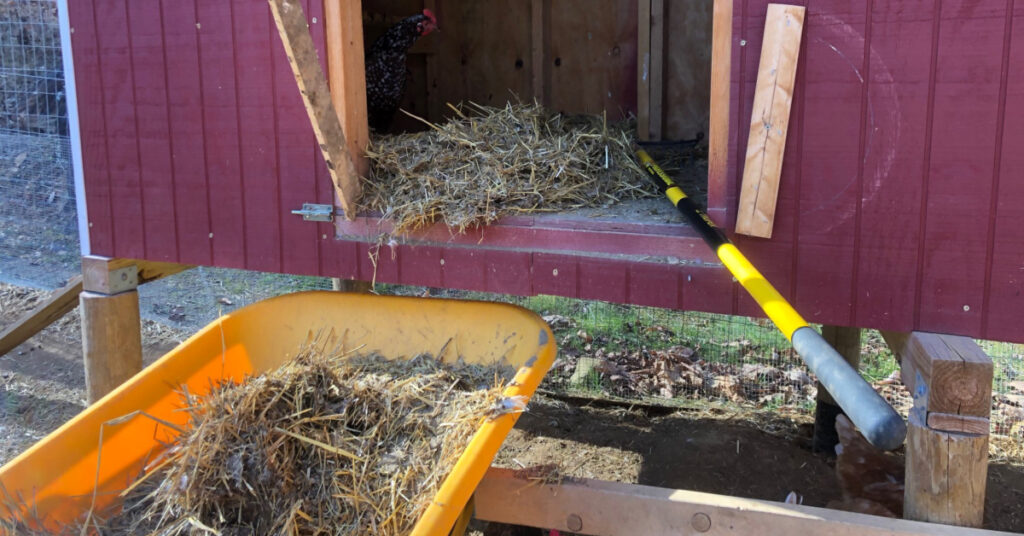
It’s a No-Brainer
I consider raising chickens a must for preppers, especially as the cost of eggs increases and we face food shortages. Chickens eggs will provide you with much needed protein and fat at little or no cost. You may also want to use the eggs for barter.
Did you ever notice how more preppers and homesteaders own chickens than milk cows? It’s because they are easier, cheaper, and take far less space.
If you buy chicks today, they will be feathered out before the first frost and you’ll have fresh eggs in December.
